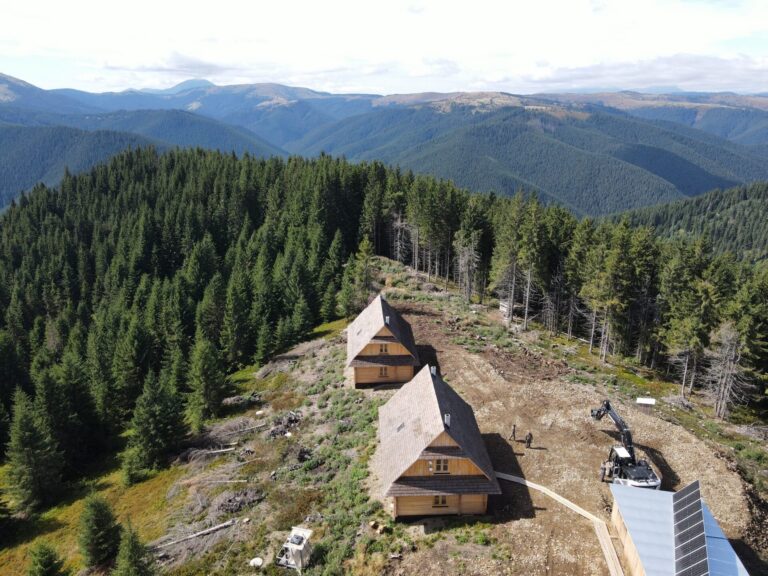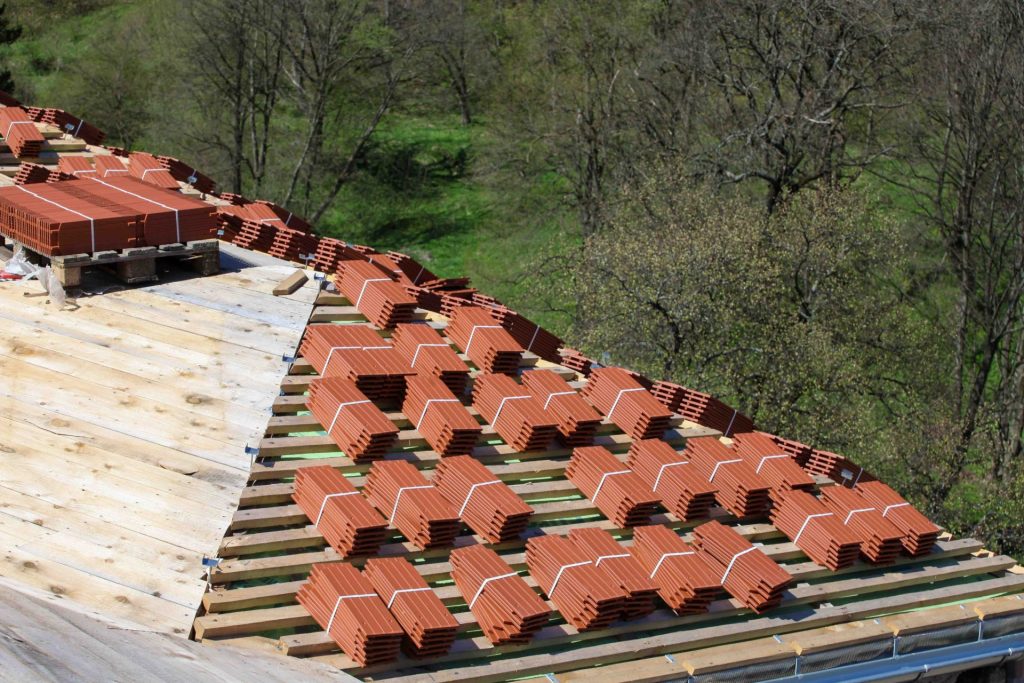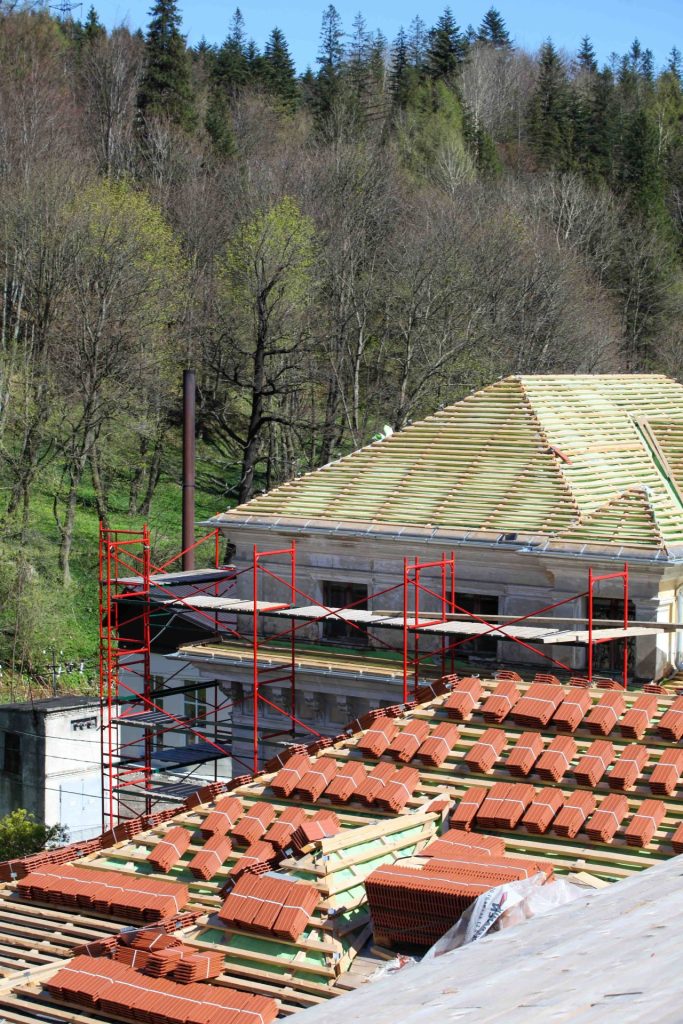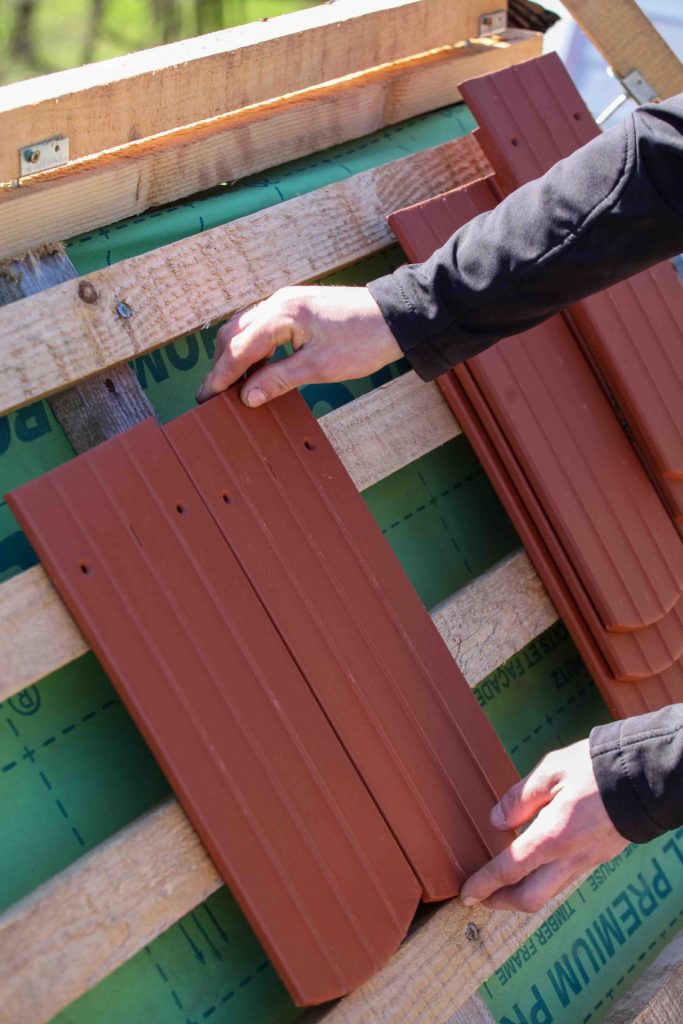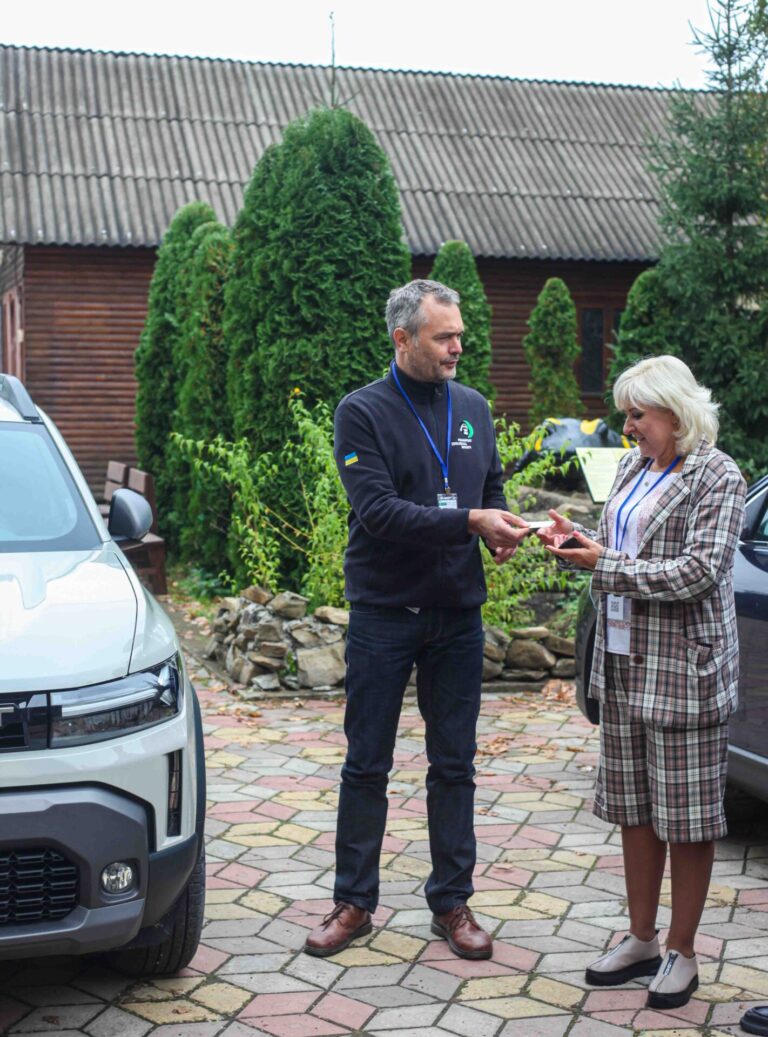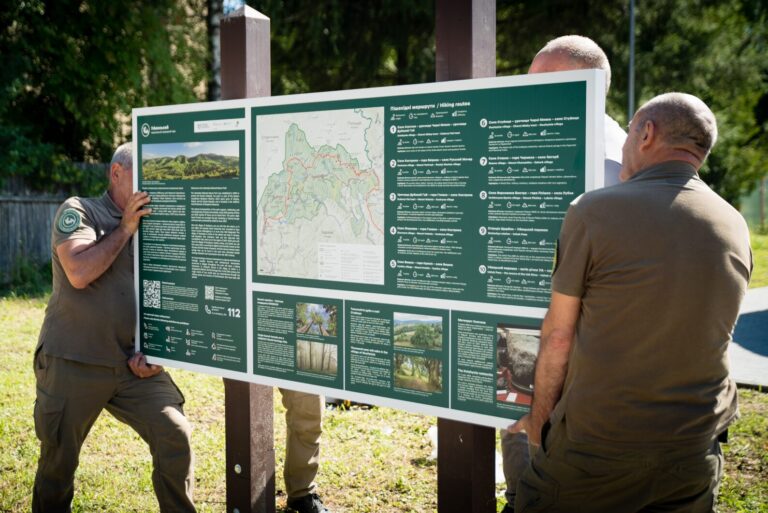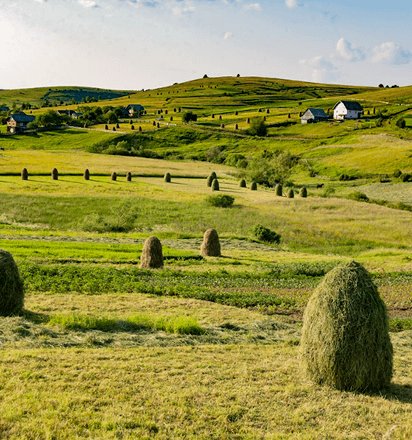With 55 thousand traditional tiles in place, the Gredel’s Palace roof restoration is complete
The well-known palace in the Ukrainian Carpathians in Skole became a shelter for temporarily displaced people at the beginning of russia’s invasion of Ukraine. Gredel’s Palace is an architectural monument of great local importance.
Built in the mid-19th century, most parts and structures of the neo-baroque palace were in a state of disrepair and the building’s roof was badly damaged. Once Gredel’s Palace’s temporary residents had found more suitable accommodation, the Frankfurt Zoological Society – with the support of the Skolivski Beskydy National Nature Park – decided to initiate repairs and make the building hospitable for visitors once more.
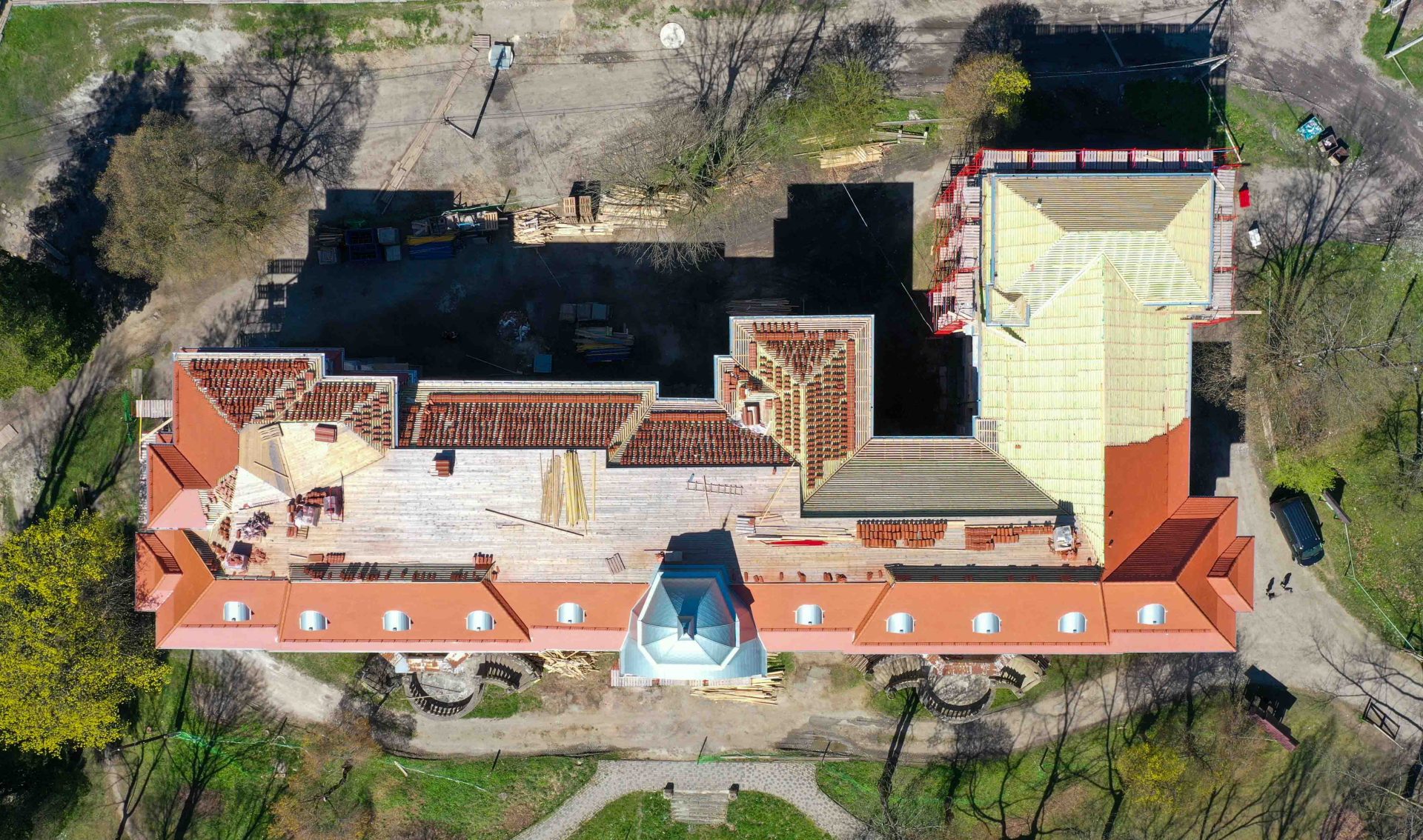
The immense project began with preparatory restoration work and repairs to the palace’s rafter system. Specialists then began work on installing the roof. The roof was restored using traditional roofing materials, including ceramic tiles, locally known as “bobrivka”.
Some sections of the roof that did not slope at the right angles to install the tiles were instead covered with titanium zinc. As of June 2024, all roofing works are complete.
“If we hadn’t repaired the roof now, in just a few more years this building would have been left in a dire condition. The next steps involve providing modern electrical installations and heating for the palace,” said Vasyl Pryndak, director of the Skolivski Beskydy National Park.
Around 400,000 euros was allocated for the renovation of the palace, provided by a private donor through the Frankfurt Zoological Society. The funds covered architectural designs and other construction documents, roofing materials, contractors’ work, and timber, 90% of which was provided by the Skolivski Beskydy National Park. Currently, the development of design and other construction documents for the next stages of the palace’s renovations are also being completed.
The palace is leased to the Skolivski Beskydy National Park on a long-term basis and is expected to become an environmental education centre and one of the main visitor attractions of the Skole Carpathians. The building will host the national park’s central office, an environmental education and visitor center as well as facilities such as a café/restaurant, guest rooms and other spaces useful to the community.
The next stage of work will be the development of the palace concept and detailed elaboration of its functions. Read more about the cooperation between the Frankfurt Zoological Society and the Skole Beskydy National Park here.
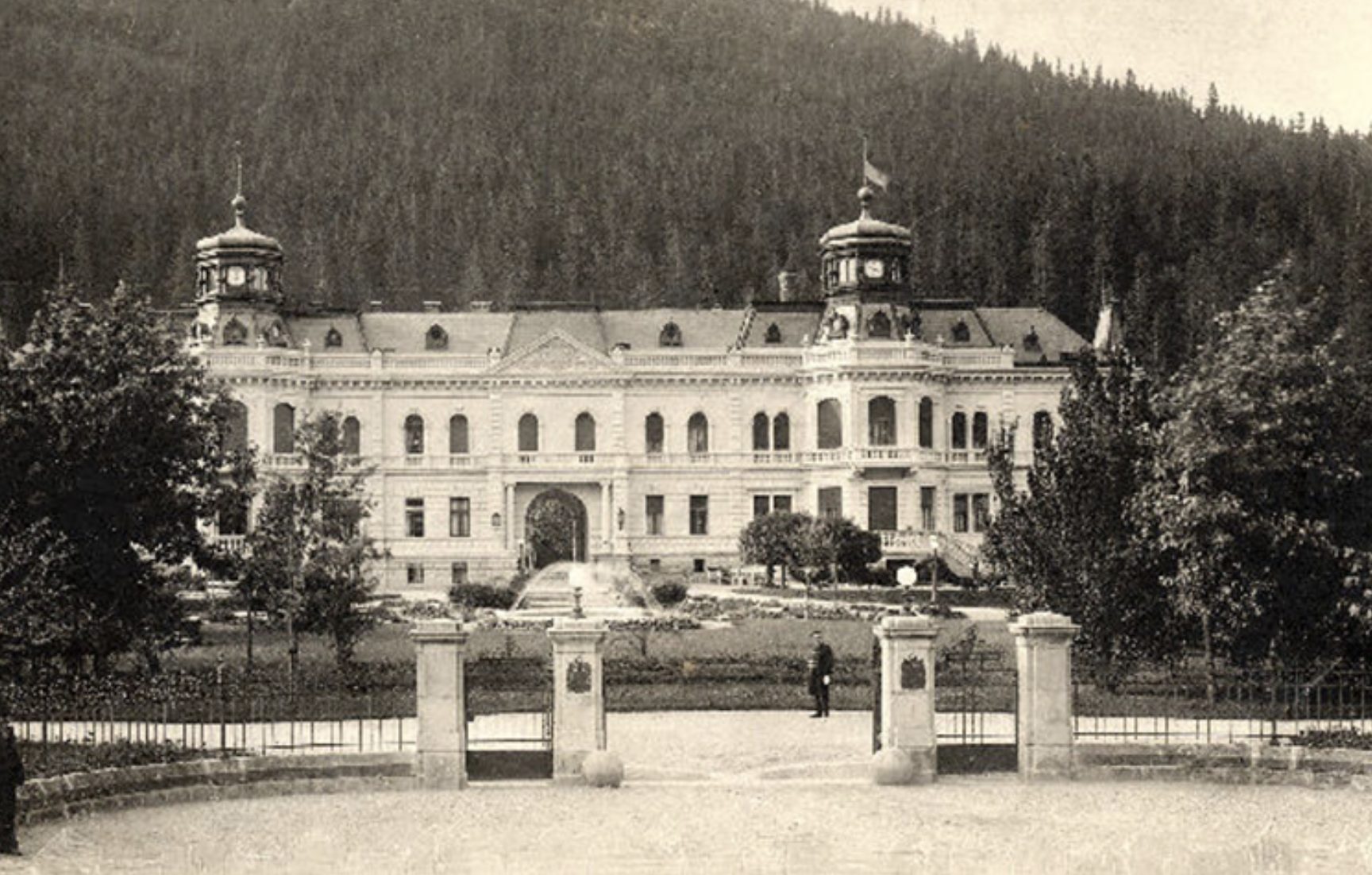
The two-story Gredel’s Palace was built in the neo-baroque style. The palace and its park were laid out by Baron Eugeniusz Kinski in the mid-19th century. After winning money in a casino, Albert Grödel and the entrepreneur Wilhelm Adam Schmidt bought the palace and the surrounding forests and founded the company Brothers Grödel and Schmidt. They were the largest forest owners in the Skole region at that time. In 1886, the owners of the palace became the Gredel brothers – of Hebrew origin, Herman, Bernard and Albert were born in the mid-19th century in the family of entrepreneur Tsadik Gredel in the German city of Friedberg in the state of Hesse and built their own industrial empire in the Carpathian forests. After the occupation of Skole by Soviet troops in late September 1939, the palace housed a department of the Interior Ministry of the Soviet Union (NKVD), which returned in August 1944 and operated until 1948. Since 1956, the palace has been used as a boarding school, housing more than 250 children.
News
